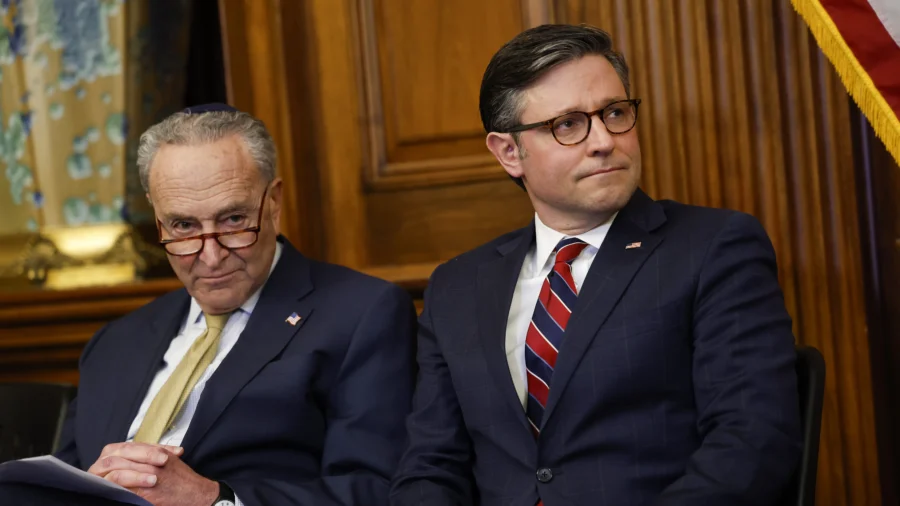For much of 2023 and early 2024, Congress was focused on one issue: appropriations. Twelve bills to fund all parts of the federal government were supposed to be passed by Sept. 30. Yet, Congress missed that deadline and three subsequent extensions to pass the bills. To avoid a government shutdown, it instead passed continuing resolutions (CRs) to temporarily fund the government and give itself more time to act.
These CRs attracted intense criticism, and the first CR prompted the House of Representatives to remove its speaker, Kevin McCarthy, from office. The process was eventually completed on March 23, nearly six months later than required.
It appears that Congress may repeat itself this year, observers say.
12 Bills to Pass
For the work week beginning July 8, the House will likely take up the fifth of twelve “appropriations,” or spending, bills for the 2025 fiscal year beginning on Sept. 30. The bill concerns the legislative branch, which involves funding Congress itself.
As of July 6, the House has passed four appropriations bills for the next fiscal year, which fund the Departments of Defense, State, Homeland Security, and Veterans Affairs. House Speaker Mike Johnson, shortly before taking office last October, promised to complete the passage of all 12 appropriations bills by the end of July and vowed that he would not let the House break for its August recess otherwise.
Regardless, the House’s bills are unlikely to be passed in their present form, given that they include many provisions opposed by congressional Democrats, who control the Senate. The White House has also warned that President Joe Biden would veto the bills as currently written.
When such disagreements occur, the Senate usually passes its own version of the bills, which can be substantially different. Both chambers then begin a “conference” process to reconcile differences and, after reaching an agreement, they pass a new version of the bill.
However, the Senate has not yet passed any appropriations bill for the next fiscal year. The Senate Appropriations Committee, which oversees the process, has begun work on the bills and solicited funding requests from senators.
The delay in the Senate leads many observers to conclude that Congress will miss the Sept. 30 deadline this year. Both houses of Congress are only scheduled to be in session for 30 days before the deadline.
“It is very unlikely that Congress completes its appropriations work before Sept. 30. … Congress will likely pass a CR in September to delay the deadline until December, where they will either negotiate a full-year omnibus or another continuing resolution,” Joshua Huder, a senior fellow of The Government Affairs Institute at Georgetown University, told The Epoch Times.
A Continuing Resolution
If passed, a CR would temporarily fund the government at levels set for the 2024 fiscal year. These bills have been controversial in the past among spending hawks, who seek greater cuts to government spending. Other officials argue that CRs do not allow government spending to keep up with inflation, which is effectively a cut.
“[A CR] is the product of this fundamentally broken Congress that is unwilling to weather a storm in order to deliver real results for the American people,” Rep. Chip Roy (R-Texas), the policy chairman of the House Freedom Caucus and one of the most prominent spending hawks in Congress, wrote last September after the passage of that year’s first CR.
“Conservatives must continue this fight and cannot reject future opportunities presented to us to force this administration to end the out-of-control spending in Washington,” Mr. Roy added.
Others, such as Secretary of Defense Lloyd Austin, warned over 2023 and 2024 that CRs hurt national security by preventing spending. “Military recruiting and readiness would be harmed. We would be forced to forego vital investments in our defense industrial base and would not be able to enter critical new multiyear contracts for munitions,” he wrote in December 2023.
Some conservative groups, however, support a CR in September—hopeful of Republicans winning control of both houses of Congress and the White House in November, at which point they may pursue aggressive cuts to spending in 2025 when the new body takes office. “[We] would likely support a continuing resolution … to push the funding debate to the next administration when President Trump and Republicans in Congress can make progress on reducing spending,” David McIntosh, president of the Club for Growth, a conservative fiscal activist group, told The Epoch Times.
Multiyear Trend
The congressional calendar has regularly featured a delayed appropriations process and subsequent CRs. Congress last met its deadline to pass all appropriations bills in 1997, which itself was only the fourth timely passage since 1977, according to the Congressional Research Service.
Even as CRs are passed to avert shutdowns, all 12 appropriations bills are rarely ever passed individually. Instead, Congress often combines them into single “omnibus” bills, which are often several thousand pages long and prepared shortly before deadlines. These large bills are often opposed by legislators who claim it’s impossible to read them and scrutinize their provisions, given their size.
“The truth is that no one, except maybe leadership, who votes on this bill tomorrow will have had a chance to read it in its entirety. Over $1 trillion of hardworking American taxpayer dollars are being spent, and the appropriators don’t even know where it’s all going,” said Rep. Andy Ogles (R-Tenn.) of the last such bill passed in March.
“This has become the normal mode of business these days,” Mr. Huder noted. “Congress really does not have enough time to complete all 12 bills.”
Messrs. Johnson, Cole, and Roy, and Senate Appropriations Committee Chair Patty Murray (D-Wash.) did not immediately respond to a request for comment.
From The Epoch Times

